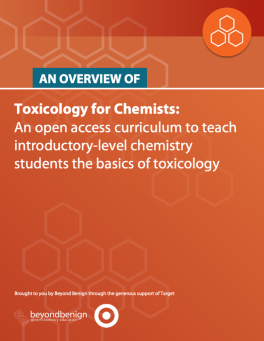08 - Environmental Toxicology (Toxicology for Chemists - Module 8)

Summary
This module serves as an introduction to the principles of environmental toxicity: air pollution, water pollution, and chemical transport and fate. Using these materials, students will learn examples of pollutants and their effects on human health and the environment through multiple case studies and in-class discussions. These lecture slides comprise mostly case studies and provide a good outlook on the chemistry through consideration of specific human experiences across the globe. Supplementary information such as activities and discussions are found within the lecture slides, not in separate documents.
What’s included?
Lectures:
“8A – Air Pollution” (1-2 hours)
“8B – Water Pollution” (1-2 hours)
“8C – Chemical Transport and Fate” (1-2 hours)
Lesson Plans:
For all lectures
Supplementary Information: contained within the lecture slides and lesson plan
File Size: 716 MB – this file is very large, please ensure you have good internet connectivity and time for the download to occur before downloading.
This course module was authored by:
Dr. Nesta Bortey-Sam, Assistant Professor, University of Pittsburgh
Samantha Totoni, MPH, University of Pittsburgh
What’s included?
Lectures:
“8A – Air Pollution” (1-2 hours)
“8B – Water Pollution” (1-2 hours)
“8C – Chemical Transport and Fate” (1-2 hours)
Lesson Plans:
For all lectures
Supplementary Information: contained within the lecture slides and lesson plan
File Size: 716 MB – this file is very large, please ensure you have good internet connectivity and time for the download to occur before downloading.
This course module was authored by:
Dr. Nesta Bortey-Sam, Assistant Professor, University of Pittsburgh
Samantha Totoni, MPH, University of Pittsburgh
Safety Precautions, Hazards, and Risk Assessment
N/A
Digital Object Identifier (DOI)
https://doi.org/10.59877/MWKR4921
File (PDF, PPT, image, etc)
Creative Commons License

This work is licensed under a Creative Commons Attribution-NonCommercial-ShareAlike 4.0 International License.

